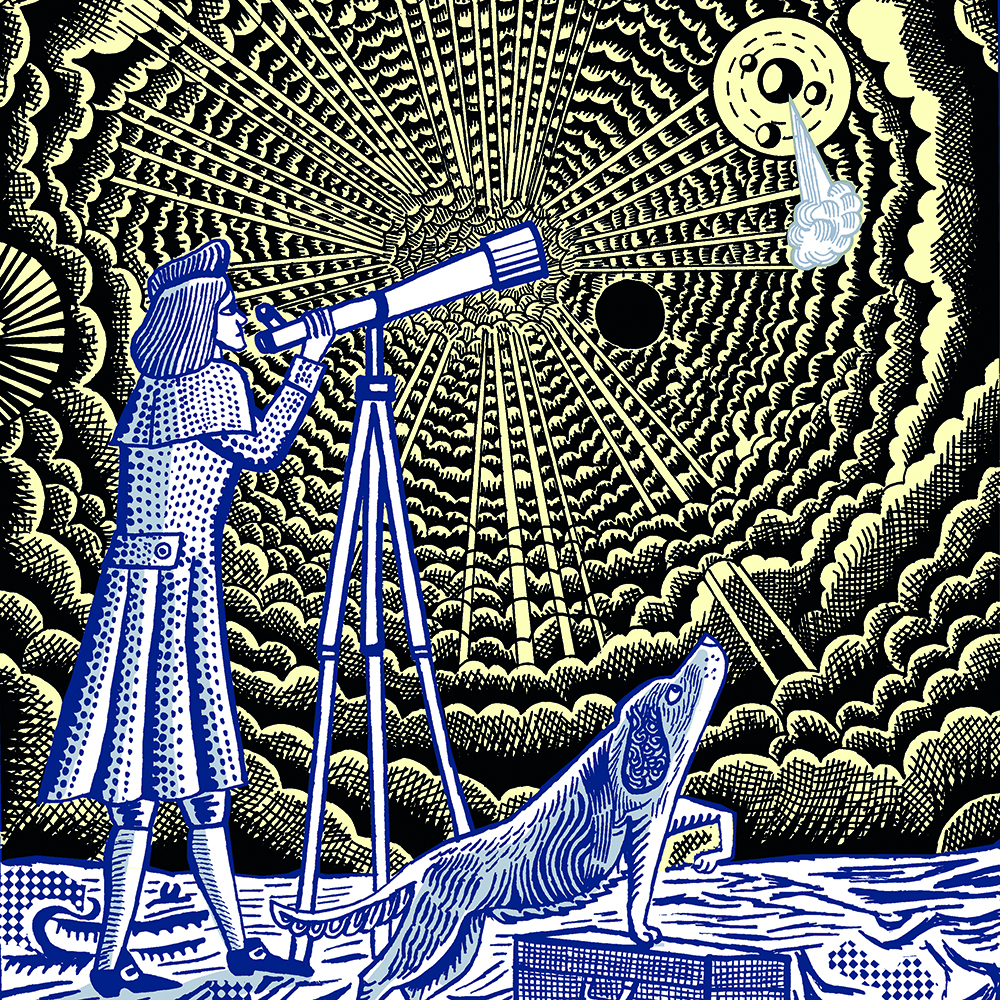Scientists have released the largest map of the universe ever compiled. Millions of galaxies have been surveyed, stretching back 11 billion years, most of the age of the cosmos. According to many scientists, this data, combined with other observations, presages a major reassessment of what we know about the universe: possibly, for the first time, revealing a crack in Einstein’s theory of gravity.
The Dark Energy Spectroscopic Instrument (DESI) is attached to a large telescope at the Kitt Peak National Observatory in Arizona. Each night it measures the positions of and distances to thousands of galaxies. Galaxies exist in groups and their motions are influenced by other, nearby galaxies. Assessed with these perturbations taken into account, the DESI 3D map reveals subtleties in the large-scale expansion of the universe. There were hints in DESI data released last year that it showed something remarkable; it has now been confirmed. But it is not what we expected.
We had thought that we knew within wide bounds what the fate of the universe would be – and it was bleak. Born from the Big Bang some 14 billion years ago, its destiny was to expand into eternity, ever larger, ever more diffuse and structureless, with even the possibility of the splintering of space and time themselves. But these recent observations might suggest that the fate of the universe has not yet been sealed.
We live in a good cosmic time to be astronomers. Our universe is bright, illuminated by stars and galaxies of stars that act as markers for the expansion of the universe. Pity the astronomers of the far, far future, when all the stars have died, left staring into a dark sky with nothing left to see.
Ourselves, the planets, stars and galaxies and all the things that shine are but a minor part of the universe, a few percent at most. In a sense, we are impurities. Most of the cosmos is dark and unknown. Roughly a quarter of what’s out there is the so-called dark matter. We don’t know what it is except that it reveals its presence only through gravity, invisibly sculpting the structure of galaxies like our own. More mysterious still is what most of the universe is made of, dark energy, a placeholder name for the unknown. It was discovered in 1998 when we saw that instead of slowing down after the Big Bang, or even maintaining a constant expansion, the cosmos was, in fact, speeding up. The strange force of the dark energy is counteracting the gravitational attraction of all else. Dark energy, whatever it is, makes up almost 70 percent of the universe.
Scientists speculate that dark energy is a property of the vacuum; for them a vacuum isn’t the absence of something but an inner landscape of limitless energy, cosmic power camouflaged in plain sight inside everything, everywhere – and literally pushing the universe apart.
It could tell us the ultimate fate of the cosmos and the first glimpse of a post-Einstein universe
The DESI observations trace the influence and history of this dark energy by mapping the distances and speeds of millions of galaxies. Like petals thrown on water they reveal the currents of space and the ebb tide of dark energy’s flow.
We had thought the pushing power of dark energy was a constant force as this fits into our understanding of the subatomic realm. But we have been shocked to discover it is almost certainly not constant. With this discovery comes the potential to rewrite the rules of the cosmos and its ultimate fate. Not least, it gives us the first glimpse of a post-Einstein universe. Did I say this has shocked scientists? No, I meant to say it has thrilled them.

Einstein’s beautiful simplicity is under attack. His so-called field equation of gravity is one of the most sublime ideas ever conceived. On one side of the equation lies geometry and on the other side resides energy. Einstein had faith in it because he said everything should be made as simple as possible, but not simpler. But perhaps his belief that the most amazing thing about the universe is its comprehensibility goes only so far.
To explain the weakening of dark energy we may have to modify Einstein’s theory – a shocking but exciting prospect. If we had expected the universe to be built upon principles that are simple and beautiful we are being disabused. We have not yet reached this simplicity, if it even exists. Perhaps the closer we look the more complicated it will seem, for who told us the universe is our kind of simple? One day we might find the answers, or we will get only so far and wonder what lies beyond our capability to understand.
The intoxicating aspect of these new dark energy survey results is that it seems dark energy reached its peak billions of years ago and has been weakening ever since. It is hard to overestimate what this means. The fate of the universe rests on the balance between matter and dark energy. Could it cause the expansion of the universe to slow and then usher the so-called “Big Crunch” when the cosmos reverses the Big Bang? Does this mean that the cosmos is cyclic, with repeated big bangs? Some cosmologists would like this, as it does away with ideas of the one-time origin of the universe.
Einstein spoke of a distant and invisible piper who, oblivious to us, intones the tune of the universe. Its music is in the quantum fields that are everywhere, and in the subatomic particles that emerge from these fields. But could it be that its chief melody is the dance of dark energy rising from the false nothingness of the vacuum?
This article was originally published in The Spectator’s June 2025 World edition.























Leave a Reply